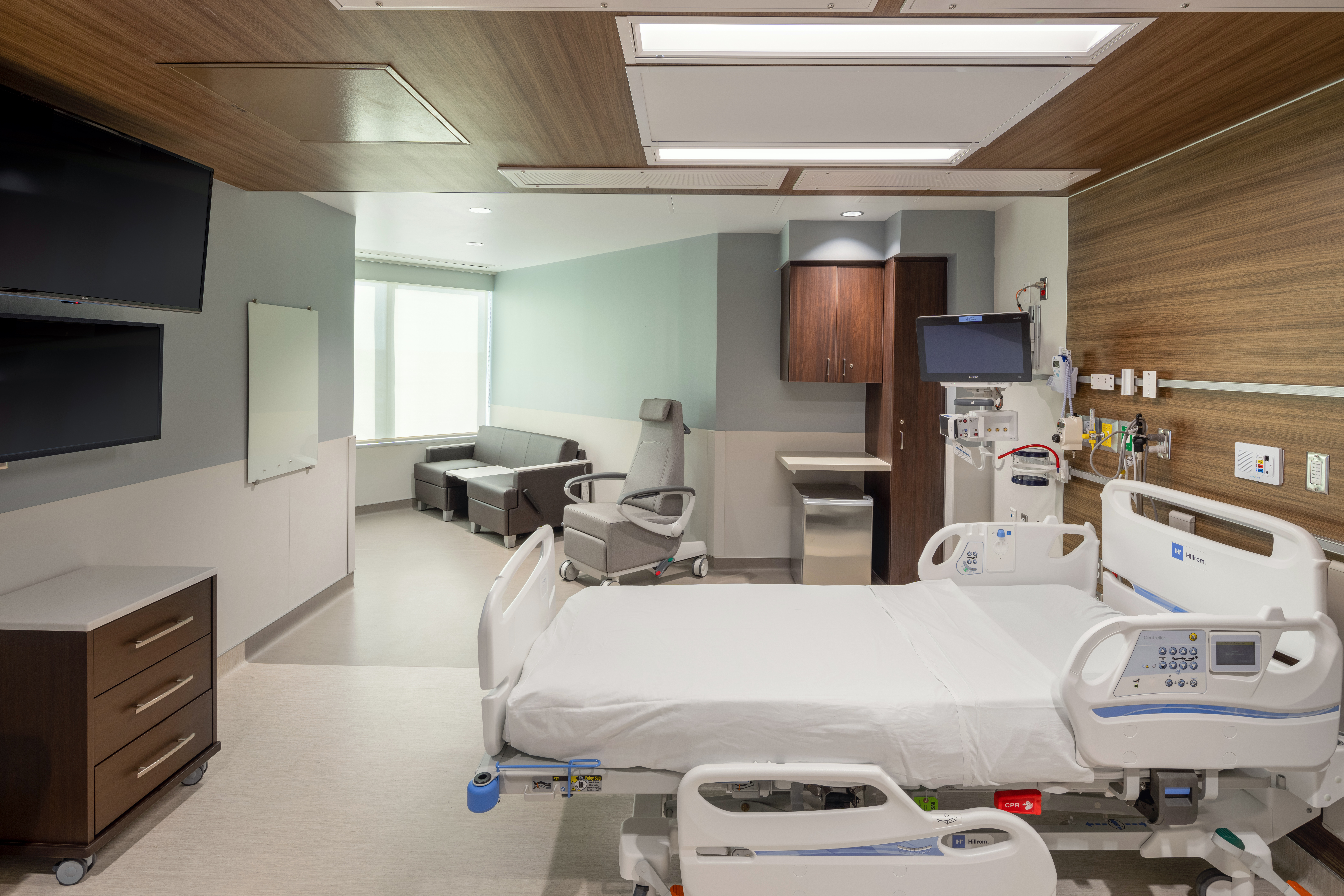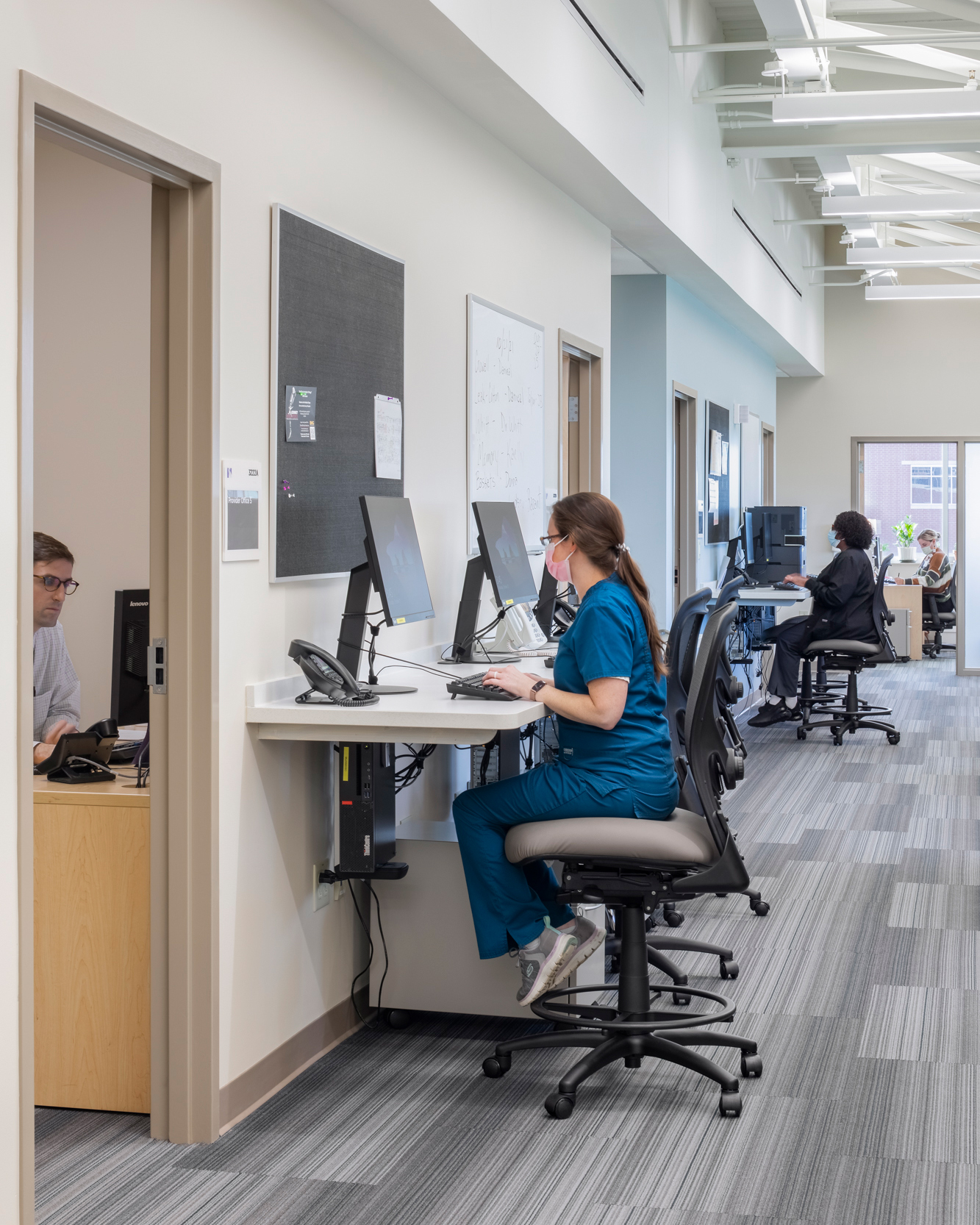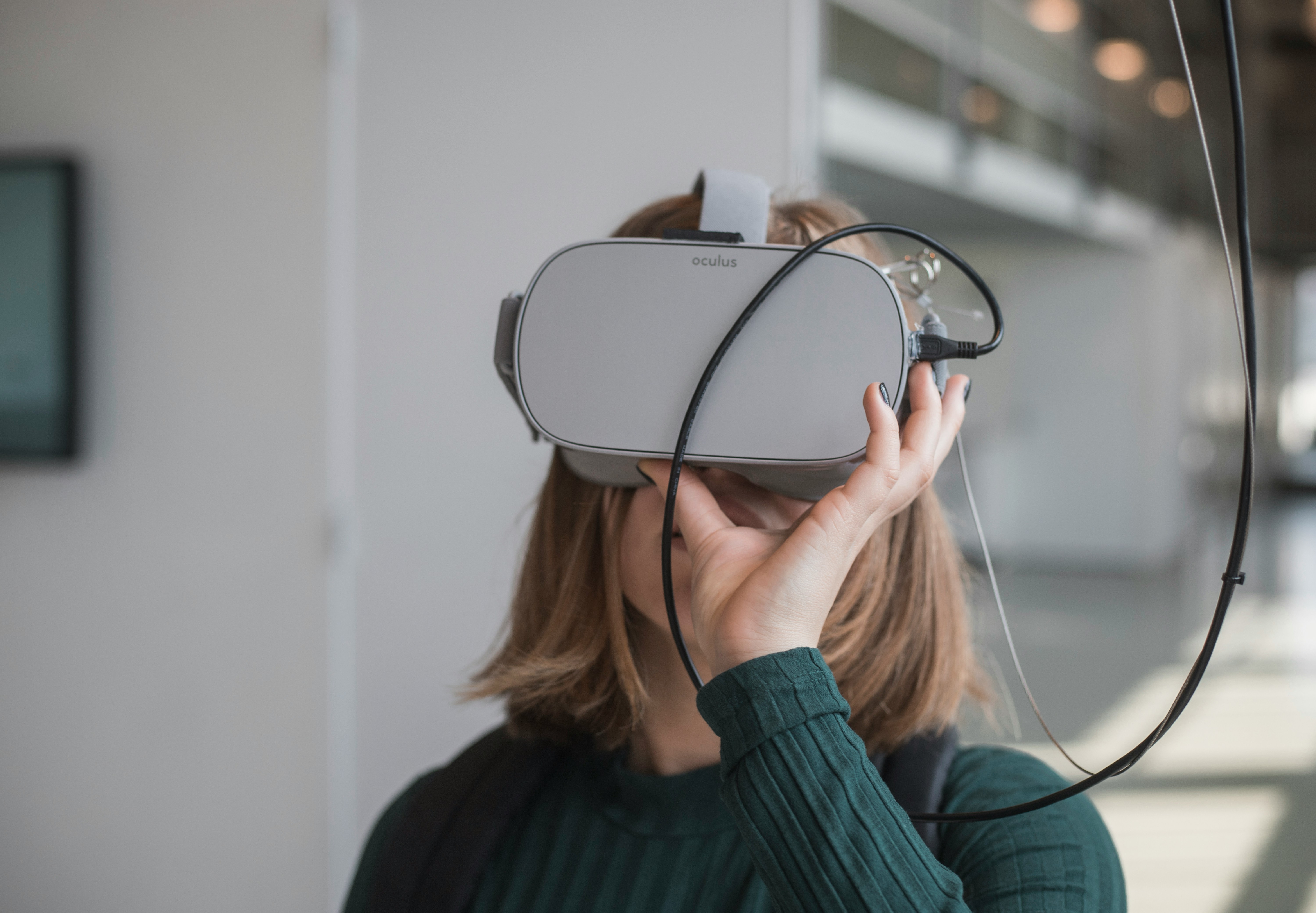Technology continues to work its way into the inpatient room, creating wondrous new possibilities that we’re only starting to grasp. Here’s a look at the near future.
By Kristina Bertocchi, AIA, Project Architect and Ken Redman, AIA, ACHA, LEED AP BD+C, NCARB, Senior Medical Planner
Very few things dominate the national conversation like artificial intelligence (AI). For every person enamored with the potential of ChatGPT and its brethren, there’s someone else decrying these platforms as a workplace cheat code that will potentially put people out of jobs. How it will all play out is unknown.
But here is the reality in healthcare: Trends suggest the workforce is dwindling and shortages in nursing seem inevitable. AI could help alleviate some of those workforce needs, and allow us to use the existing workforce more effectively. It could speed up diagnostic recommendations. And it could help wrangle the terabytes of data the industry generates and do more with it. Equally interesting, though not yet talked about as much, is the role of virtual and augmented reality in healthcare settings.
These technologies can be a miracle for rural and other patients, for example, who today have limited access to specialist care. With these possibilities come considerations, of course. There could be legal and ethical questions, along with the learning curve and adoption by staff who are used to tried-and-true practices.
At DesignGroup, we’re always exploring how new technologies can advance the improvement of healthcare service, safety, and chains of command. In fact, Kristina (co-author of this article) is currently planning and will moderate a special session on technology Summer for the Leadership Summit this July, sponsored by the American College of Healthcare Architects’ and the Academy of Architecture for Health. Our panelists will discuss how leading hospitals and designers are grappling with both the amazing possibilities and unknown perils of AI-powered healthcare.
It’s a rich topic and we’re looking forward to sharing what we learn from the panelists. Until then, here are some initial thoughts on AI and VR, and how we think it could improve experiences for patients and staff alike.

Artificial intelligence (AI): technology that enables computers and machines to simulate human intelligence and problem-solving capabilities.
(https://www.ibm.com/topics/artificial-intelligence n.d.)
AI applications in healthcare could range from life-saving treatments based on predictive analytics to managing routine and time-consuming tasks that increase the amount of time a caregiver spends with their patients. Again, let’s look at the drivers AI could solve. We have a clinical shortage and burnout is becoming more relevant as well. There is also a need for higher levels of clinical effectiveness. The nursing shortage is real and many related tasks could be performed with AI: automated documentation, collection of vitals, and bed turns, allowing nurses to download patient history from the previous shift. In fact, this is already in practice in some hospitals. (Holston Sept 2022)
Wearable devices and/or sensors embedded in the room infrastructure could continuously collect vital signs and other data, enabling healthcare professionals to detect early signs of deterioration and respond with faster intervention. AI can create more time for physicians and care teams to research and diagnose underlying medical conditions and accelerate healing, with reduced cost.
In terms of direct engagement with the patient, chatbots could provide instant, 24/7 availability for patients to ask questions, report symptoms, and track their health progress. The idea that a virtual “care companion” could listen to and build a relationship with the patient has lots of potential; AI would be alongside them during their journey, accessible at any time.

Virtual reality (VR): an artificial environment which is experienced through sensory stimuli (such as sights and sounds) provided by a computer and in which one's actions partially determine what happens in the environment.
(https://www.merriam-webster.com/dictionary/virtual%20reality)
VR technology has potential for helping lower patient anxiety, reduce boredom, and even alleviate pain. Virtual reality and augmented reality headsets can create immersive experiences that allow patients to visualize their conditions and treatment options more effectively. Imagine a surgeon using VR to simulate a procedure you or a loved one will experience. This could help them explain the process to you and reduce the unknowns. (We don’t know if we would need or want to see everything, but we love having it as an option.)
VR headsets could also simulate relaxing environments for patients in extended stays, or those who struggle with confinement in the bed or room. Apple’s VisionPro VR simulates IMAX-size movie environments in an easy-to-manage headset that is self-contained and untethered from a PC or gaming platform. It’s believed that VR could aid in pain management, too, by providing a distraction for patients recovering from painful procedures, helping them relax, and contributing to their overall well being.

While many changes like these coming to the inpatient room are virtual, the space and personal experience is still (and always will be) physical. Creating a physical space that is working with, not against, the technology is crucial. We should strive to strike a balance between clinical functionality and hospitality comforts to create healing environments that feel less institutional and more welcoming.
Advances like these have so much promise to remove the burden of rudimentary tasks on nurses and physicians, allowing them to provide even greater hands-on, empathic clinical care. It also has the possibility of easing the experiences of long-term patients, fostering quicker recoveries, and lessening the emotional toll of a hospital stay.
Kristina’s panel discussion with Cleveland Clinic’s Director of Planning Travis Tyson and Anita Smarth, CEO of Clinovations Government + Health, will take place during the July 26-28 Senior Leadership Summit. To learn more, please visit https://healtharchitects.org/summer-leadership-summit-sls/.

Kristina Bertocchi, AIA, NCARB
Project Architect
As a project architect, Kristina finds purpose in helping the client’s vision become a reality, from early conception to construction. She is dedicated to the healthcare discipline and enjoys working in a field that gives back to the communities she works in. Kristina believes communication is at the core of architecture and that successful communication results in successful projects. She balances her professional work with academic engagement at The Ohio State University, teaching freshman studio to help support the students during their challenging first year.

Ken Redman, AIA, ACHA, LEED AP BD+C, NCARB | Senior Medical Planner
Ken is a Senior Healthcare Planner who has dedicated most of his life to the design and planning of some of the most prominent healthcare organizations in the United States and Canada. Working on prestigious Pediatric facilities in his earlier career such as CHOP, CNMC, Nationwide Children’s Hospital, CHOC, Toronto Sick Kids, and British Columbia Children’s, Ken has been able transition those experiences into current projects that require extensive healthcare knowledge and background into complex forward-thinking places of healing.
